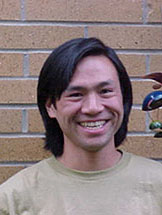
Abstract
Efforts to design conservation networks to maximally protect remaining biodiversity are now utilizing remote sensing and geographic information systems to develop spatially explicit models that predict species diversity patterns over large geographic scales. One of the largest and most publicized efforts is the National Gap Analysis Project (GAP). GAP may be a powerful tool for coarse-filter biodiversity protection but the models have been criticized on a number of accounts. Specifically, the predicted species distributions have not been 'ground-truthed'; predictions are based on a static picture of the landscape; the spatial scale may be too coarse for many conservation applications; and the assumption that a subset of taxa can act as a surrogate for overall biodiversity is untested. We propose to address these issues by comparing the predictions of three remote sensing, GIS-based models developed at three spatial scales to data from direct field surveys of multiple taxa. The predictions of the Montana and Wyoming GAP projects will be compared to the results of a unique research project conducted by Dr. Diane Debinski at Iowa State University and her associates. For the past several years Debinski et.al. have been using fine resolution remote sensing, GIS, and direct field sampling of birds, butterflies and plants to model the temporal and spatial dynamics of montane meadows in the Greater Yellowstone Ecosystem. The Debinski et.al. data, combined with Montana and Wyoming GAP data, offer the unique opportunity to achieve the following objectives: 1) assess GAP predictions with field sampled data; 2) quantify the information gained with increasing spatial resolution of remote sensing/GIS models; 3) test the assumption that a subset of taxa can serve as a surrogate for biodiversity as a whole. Results of this research will directly address The Nature Conservancy's interest to test the coarse filter approach to conserving biodiversity and to assess the effectiveness of different scales of resolution for describing ecological communities.
